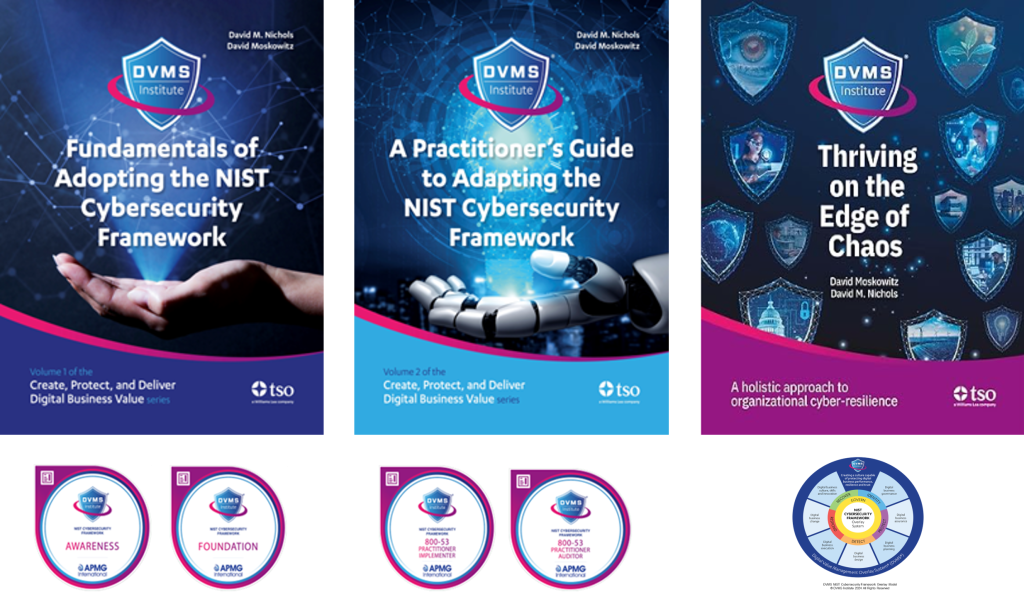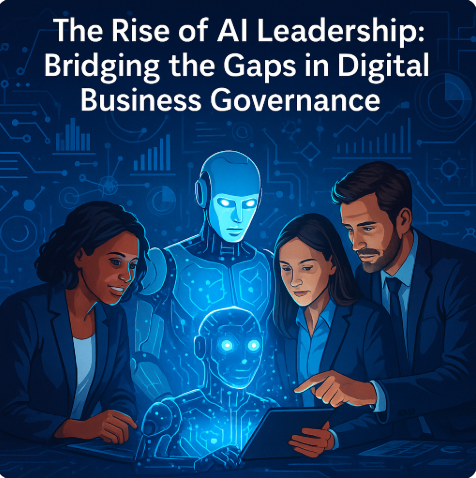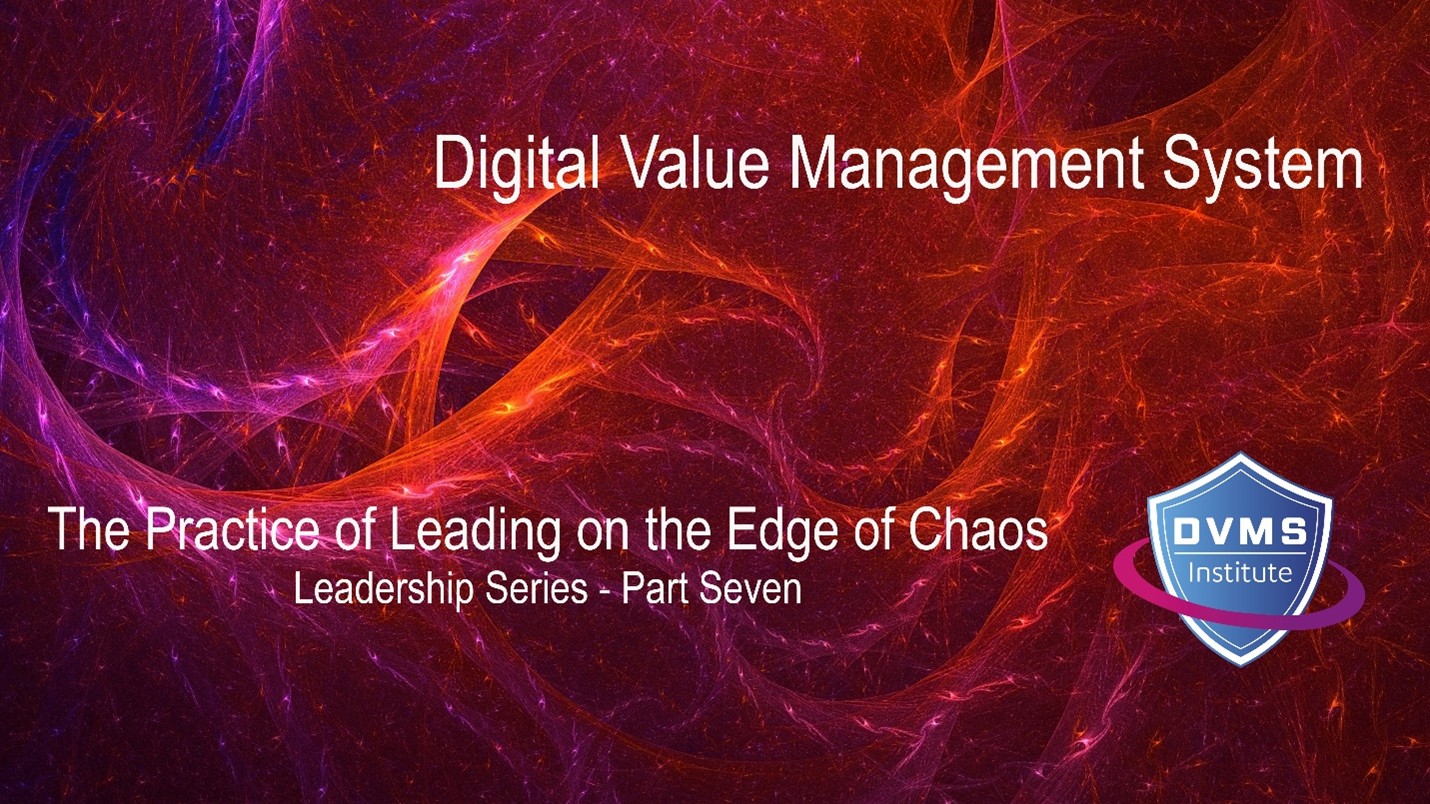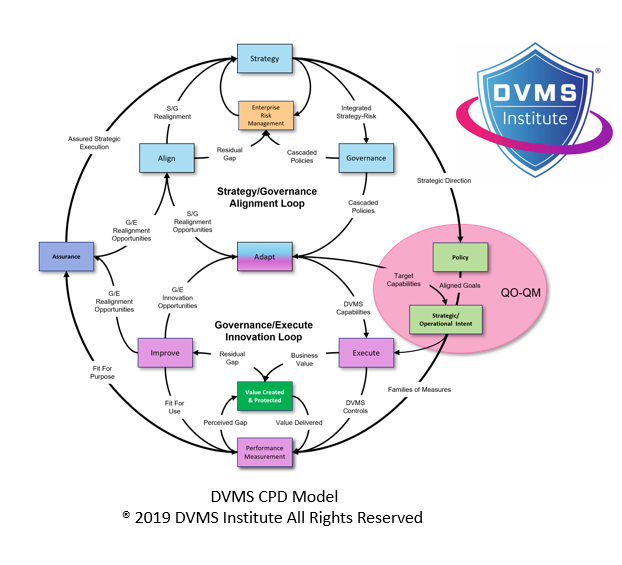The Rise of AI Leadership: Bridging the Gaps in Digital Business Governance
Rick Lemieux – Co-Founder and Chief Product Officer of the DVMS Institute
The Digital Era Has Outgrown Traditional Leadership
The rapid acceleration of digital transformation has exposed a stark reality: traditional leadership models are increasingly unfit for the complexity and velocity of today’s digital business landscape. Organizations face a convergence of pressures — cybersecurity threats, regulatory shifts, emerging technologies, and market volatility — demanding faster, more precise, and more adaptive decision-making. Yet many executive teams remain constrained by legacy thinking, linear decision models, and siloed operations. Leadership isn’t keeping up. In this widening gap between risk and response, artificial intelligence (AI) is emerging as a support system and a potential leadership force.
Cognitive and Structural Limits Bottleneck Human Leadership
Even the most capable executives face cognitive constraints. Human leaders cannot simultaneously process thousands of data points, detect nuanced anomalies, predict emergent threats, and optimize resource allocations in real time. Leadership committees — while necessary for accountability — often move at the speed of consensus, not the speed of change. Traditional hierarchies rely on weekly or quarterly reporting cycles, delayed risk visibility, and intuition-based prioritization. The result? Missed opportunities, late responses, and recurring failures. These are not failures of character — they are failures of capacity. And AI is built to solve for capacity.
AI Excels Where Leaders Struggle: Speed, Scale, and Pattern Recognition
AI systems, particularly those powered by machine learning and large language models (LLMs), are purpose-built for complexity. They can simultaneously ingest and correlate data across cybersecurity logs, financial systems, threat intelligence feeds, customer behavior, and compliance frameworks. AI doesn’t sleep, doesn’t forget, and doesn’t get distracted by office politics. It thrives in environments of noise and nuance. This makes AI especially effective in operationalizing cyber resilience strategies, where pattern recognition, anomaly detection, and real-time decision support are critical. Where human leaders hesitate or generalize, AI can provide timely, context-specific recommendations grounded in live data.
AI as a Governance Overlay: From Advisory to Autonomous
Today’s AI tools already function as decision co-pilots — offering dashboards, predictive analytics, and automated alerts. But the trajectory is shifting. AI is evolving into a governance overlay: a persistent, cross-domain system that monitors organizational health, evaluates decision quality, and anticipates emergent risks. It integrates across functions — governance, planning, execution, assurance — and connects the dots faster than human chains of command can. In the DVMS Institute’s terminology, AI aligns naturally with a resilient organizational minimum viable capability (MVCs): Govern, Assure, Plan, Design, Change, Execute, and Innovate. As these capabilities scale, AI will increasingly automate its orchestration.
Filling the Strategic Gaps: AI as the Strategy-Risk Integrator
One of the most dangerous leadership gaps today is the persistent disconnect between strategy and risk. Executives may greenlight digital innovation while underestimating security, compliance, or performance risks. AI is uniquely suited to close this gap. It can integrate real-time threat modeling with business objectives, simulate risk outcomes under multiple strategic scenarios, and suggest mitigations before humans perceive the danger. This is not about replacing strategic intent but aligning execution with intelligent foresight. AI doesn’t just respond to risk; it enables leaders to shape strategy with complete visibility into the risk landscape.
The End of the Silo: AI Enables a Holistic Organizational View
Most organizations still suffer from fragmentation. Risk, IT, cybersecurity, finance, and operations often work in parallel, rarely intersecting at the speed needed for modern decision-making. AI breaks these silos. When deployed as an organizational overlay — like how DVMS is designed to function — AI can ingest signals across domains and return unified insights. This supports a more agile, systems-based view of the enterprise. AI-driven platforms can evaluate how a new vendor contract affects supply chain risk, cybersecurity exposure, and regulatory posture — all at once. This multidimensional view is the essence of resilient governance — something traditional leadership models struggle to maintain.
Augmenting Leadership, Not Replacing It — Yet
AI doesn’t need to replace executives to transform leadership. It augments their ability to make sense of complexity. It raises the floor of situational awareness, accelerates response cycles, and helps leaders make informed decisions under pressure. The most effective C-suites of the future will not be those with the most experience, but those who know how to harness AI as a partner in leadership. We’re moving into an era where boards may ask, “What does the AI recommend?” with the same weight as “What does the CFO think?” The power dynamic is already shifting — from human-only judgment to hybrid intelligence.
Ethics, Oversight, and the New Role of Human Leaders
Of course, AI is not infallible. Biases in training data, flawed algorithms, and opacity in decision logic are legitimate concerns. Human leadership remains essential, not as the data analyst, but as the ethical governor. The role of executives will increasingly shift toward AI supervision: setting guardrails, enforcing transparency, and making value-based decisions that machines can’t. As AI takes on more operational responsibility, leadership becomes less about managing people and more about curating principles, monitoring integrity, and validating outcomes. Governance becomes a human-AI symbiosis, not a control hierarchy.
Why AI Adoption is Now a Leadership Responsibility
Interestingly, the failure to integrate AI meaningfully into leadership workflows is itself a leadership gap—executives who fail to engage with AI as a strategic asset risk being outpaced by competitors who do. The window for experimentation is closing. In regulated industries like finance, healthcare, and defense, AI is already becoming integral to regulatory compliance and risk modeling. AI is essential for threat hunting, breach detection, and predictive response in cybersecurity. C-suites that continue to relegate AI to “innovation labs” or “R&D teams” are effectively under-investing in the core leadership infrastructure of the digital age.
Conclusion: AI is the Next Operating System for Leadership
Leadership in the digital era requires more than experience — it involves scale, speed, and systems intelligence. AI brings these capabilities to the table. It doesn’t suffer from fatigue, oversight gaps, or political blind spots. It doesn’t replace judgment, but it does replace guesswork. As digital complexity increases, AI will not only support leadership — it will increasingly become the leadership operating system.
Organizations that embrace AI as a governance partner will lead with clarity, resilience, and confidence. Those that don’t will continue to lag, not because they lack insight, but the architecture to act on it. In the digital future, AI will run more than operations. It will also run the conversation about what matters and why.
About the Author

Rick Lemieux
Co-Founder and Chief Product Officer of the DVMS Institute
Rick has 40+ years of passion and experience creating solutions to give organizations a competitive edge in their service markets. In 2015, Rick was identified as one of the top five IT Entrepreneurs in the State of Rhode Island by the TECH 10 awards for developing innovative training and mentoring solutions for boards, senior executives, and operational stakeholders.
In today’s digitally driven economy, cyber disruptions are no longer an “if” but a “when.”
The DVMS Institute’s Certified Training Programs teach organizations the skills to build a Holistic and Culture-Aligned System capable of coordinating Adaptive, Governance, Resilience, and Assurance actions across a Complex Digital Ecosystem.
Achieving true cyber resilience across a complex digital ecosystem requires seamless alignment between organizational Strategy, Governance, and Operations, underpinned by a culture dedicated to sustaining and continuously innovating organizational digital value.

The DVMS positions cyber resilience as a strategic, enterprise-wide capability powered by the Institute’s CPD, Z-X, and 3D Knowledge models.
This systems-based approach to cyber operational resilience demands active engagement from all members of the Digital Ecosystem, with each member playing a distinct role in proactively identifying and mitigating the systemic risks that threaten digital business operations.
This adaptive, forward-looking approach to Governance, Resilience, and Assurance (GRA) positions businesses to:
- Maintain Operational Stability Amidst Constant Digital Disruption
- Drive Agility and Trust Across Your Digital Ecosystem
- Satisfy Critical Regulatory and Certification Requirements
- Leverage Cyber Resilience as a Competitive Advantage
DVMS Explainer Videos
- Architecture Video: David Moskowitz explains the DVMS System
- Case Study Video: Dr. Joseph Baugh Shares His DVMS Story.
- Overlay Model – What is an Overlay Model
- ZX Model – The MVC’s that power operational resilience
- CPD Model – Adaptable governance and assurance
- 3D Knowledge Model – Enabling holistic organizational learning
- FastTrack Model – A phased approach to cyber resilience
Digital Value Management System® is a registered trademark of the DVMS Institute LLC.
® DVMS Institute 2025 All Rights Reserved




